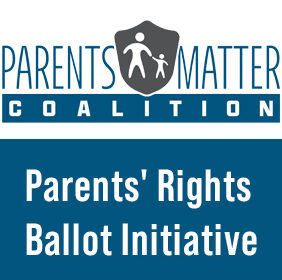
Written by Jonathan V.Last
You may recall Brendan Eich. The cofounder and CEO of Mozilla was dismissed from his company in 2014 when it was discovered that, six years earlier, he had donated $1,000 to California’s Proposition 8 campaign. That ballot initiative, limiting marriage to one man and one woman, passed with a larger percentage of the vote in California than Barack Obama received nationally in 2012. No one who knew Eich accused him of treating his gay coworkers badly—by all accounts he was kind and generous to his colleagues. Nonetheless, having provided modest financial support to a lawful ballot initiative that passed with a majority vote was deemed horrible enough to deprive Eich of his livelihood. Which is one thing.
What is quite another is the manner in which Eich has been treated since. A year after Eich’s firing, for instance, Hampton Catlin, a Silicon Valley programmer who was one of the first to demand Eich’s resignation, took to Twitter to bait Eich:
Hampton @hcatlin Apr 2
It had been a couple weeks since I’d gotten some sort of @BrendanEich related hate mail. How things going over there on your side, Brendan?
BrendanEich @BrendanEich
@hcatlin You demanded I be “completely removed from any day to day activities at Mozilla” & got your wish. I’m still unemployed. How’re you?
Hampton @hcatlin Apr 2
@BrendanEich married and able to live in the USA! . . . and working together on open source stuff! In like, a loving, happy gay married way!
It’s a small thing, to be sure. But telling. Because it shows that the same-sex marriage movement is interested in a great deal more than just the freedom to form marital unions. It is also interested, quite keenly, in punishing dissenters. But the ambitions of the movement go further than that, even. It’s about revisiting legal notions of freedom of speech and association, constitutional protections for religious freedom, and cultural norms concerning the family. And most Americans are only just realizing that these are the societal compacts that have been pried open for negotiation.
Same-sex marriage supporters see this cascade of changes as necessary for safeguarding progress against retrograde elements in society. People less deeply invested in same-sex marriage might see it as a bait-and-switch. And they would be correct. But this is hardly new. Bait-and-switch has been the modus operandi of the gay rights movement not, perhaps, from the start, but for a good long while.
It began at the most elementary factual level: How many Americans are gay? For decades, gay-rights activists pushed the line that 1 out of every 10 people is homosexual. This statistic belied all evidence but was necessary in order to imbue the cause with a sense of ubiquity and urgency. The public fell so hard for this propaganda that in 2012 Gallup did a poll asking people what percentage of the country they thought was gay. The responses were amazing. Women and young adults were the most gullible, saying, on average, that they thought 30 percent of the population was gay. The average American thought that 24 percent of the population—one quarter—was gay. Only 4 percent of respondents said they thought homosexuals made up less than 5 percent of the population.
But even 5 percent turns out to be an exaggeration. The best research to date on American sexual preference is a 2014 study from the Centers for Disease Control with a monster sample of 34,557 adults. It found that 96.6 percent of Americans identified as heterosexual, 1.6 percent identified as gay or lesbian, and 0.7 percent as bisexual. The percentage of gays and lesbians isn’t much higher than the percentage of folks who refused to answer the question (1.1 percent).
Then there’s the matter of the roots of homosexuality. Important to the narrative behind the same-sex marriage movement has been the insistence that sexual orientation is genetically determined and not a choice. But now that same-sex marriage is a reality, some activists are admitting that this view might not, strictly speaking, be true. For instance, in the avant-garde webzine n+1, Alexander Borinsky argued that sexuality is a characteristic to be actively constructed by the self. He was making a philosophical argument from the safety of gay marriage’s now-dominant position. Others were less philosophical and more practical. Here, for instance, is how the dancer and writer Brandon Ambrosino tackled the subject in the New Republic in January 2014:
[I]t’s time for the LGBT community to start moving beyond genetic predisposition as a tool for gaining mainstream acceptance of gay rights. . . .
For decades now, it’s been the most powerful argument in the LGBT arsenal: that we were “born this way.” . . .Still, as compelling as these arguments are, they may have outgrown their usefulness. With most Americans now in favor of gay marriage, it’s time for the argument to shift to one where genetics don’t matter. The genetic argument has boxed us into a corner.
It’s always a little unsettling when a movement that claims the mantle of truth, liberty, and equality starts openly admitting its arguments are mere “tools” to be wielded for their “usefulness.” But that’s where the movement is these days. Remember when proponents of same-sex marriage mocked people who suggested that creating a right to same-sex “marriage” might weaken the institution of marriage itself: How could my gay marriage possibly affect your straight marriage? Those arguments have outlived their usefulness, too. Here’s gay activist Jay Michaelson last year in the Daily Beast:
Moderates and liberals have argued that same-sex marriage is No Big Deal—it’s the Same Love, after all, and gays just want the same lives as everyone else. But further right and further left, things get a lot more interesting. What if gay marriage really will change the institution of marriage, shifting conceptions around monogamy and intimacy? . . .
[T]here is some truth to the conservative claim that gay marriage is changing, not just expanding, marriage. According to a 2013 study, about half of gay marriages surveyed (admittedly, the study was conducted in San Francisco) were not strictly monogamous.
This fact is well-known in the gay community—indeed, we assume it’s more like three-quarters. But it’s been fascinating to see how my straight friends react to it. Some feel they’ve been duped: They were fighting for marriage equality, not marriage redefinition. Others feel downright envious, as if gays are getting a better deal, one that wouldn’t work for straight couples. . . .
What would happen if gay non-monogamy—and I’ll include writer Dan Savage’s “monogamish” model, which involves extramarital sex once a year or so—actually starts to spread to straight people? Would open marriages, ’70s swinger parties, and perhaps even another era’s “arrangements” and “understandings” become more prevalent? Is non-monogamy one of the things same-sex marriage can teach straight ones, along with egalitarian chores and matching towel sets?
And what about those post-racial and post-gender millennials? What happens when a queer-identified, mostly-heterosexual woman with plenty of LGBT friends gets married? Do we really think that because she is “from Venus,” she will be interested in a heteronormative, sex-negative, patriarchal system of partnership? . . .
Radicals point out that gay liberation in the 1970s was, as the name implies, a liberation movement. It was about being free, questioning authority, rebellion. “2-4-6-8, smash the church and smash the state,” people shouted.
Slate’s Hanna Rosin agrees, suggesting that gay marriage won’t just change “normal” marriage, but will do so for the good:
The dirty little secret about gay marriage: Most gay couples are not monogamous. We have come to accept lately, partly thanks to Liza Mundy’s excellent recent cover story in the Atlanticand partly because we desperately need something to make the drooping institution of heterosexual marriage seem vibrant again, that gay marriage has something to teach us, that gay couples provide a model for marriages that are more egalitarian and less burdened by the old gender roles that are weighing marriage down these days.
Of course, not everyone in the same-sex marriage movement wants to help traditional marriage evolve into something better. Some want to burn it to the ground. Again in the New Republic, for instance, one member of a married lesbian couple wrote about her quest to use her own brother’s sperm to impregnate her wife. Why would she seek to do such a thing? Because “The queer parts of me relished the way it unsettled people. Uprooting convention, collapsing categories, reframing and reassigning blood relations was a subversive wet dream.” This is quite intentionally not, as Andrew Sullivan once promised, a “virtually normal” view of marriage.
Other changes are coming. Remember when people who predicted that gay marriage would lead to polygamy were mocked as dolts and yokels? Well now it turns out that polygamy is just the next frontier. “Legalize Polygamy!” declared one headline in Slate. “And now on to polygamy” urged . . . theEconomist? Oh yes, all the way back in 2013:
The excitement over the Supreme Court arguments on gay marriage has probably died down until the court comes back with a decision. And what with a majority of senators now in favour, it certainly looks like, whether by judicial or legislative action, gay marriage is on a fairly rapid road to acceptance across America. So this moment, when fewer people are paying attention and it can’t do too much harm, seems like a good time for people who support gay marriage to admit that there are a couple of arguments for it which they’ve always thought were wrong. . . .
One of the assumptions that gay marriage calls into question, for many conservatives, is: why pairs, then? If not man-woman, then why not man-woman-woman, and so forth? Again, the response of gay-marriage proponents is generally ridicule. I don’t think this is a ridiculous question. “Why can’t you marry your dog, then?” is a ridiculous question; marriage, in our society, is between consenting adult persons. . . . But “why only two?” isn’t a ridiculous question. It’s easy enough to show that gay marriage does not empirically lead to pressure to legalise polygamy; that hasn’t happened anywhere that gay marriage is legal. But this is different from explaining why opening up the boundaries of the 20th-century understanding of marriage shouldn’t raise the possibility of legalising polygamy. Why shouldn’t it be legal for more than two consenting adults to marry each other?
Why indeed? In February 2014, the Atlantic published a fawning profile of Diana Adams, a polyamorous lawyer in Brooklyn who specializes in legalizing “nontraditional” families, which means, in practice, a lot of polygamous arrangements. And she’s not just helping consenting adults who do it for sport: Adams told the Atlantic that she’s particularly excited about the possibilities for three-parent families when it comes to child-rearing. You may have missed that part in the fine print of the same-sex marriage literature.
But if you had bothered to read the fine print, you would have seen it. Changing marriage beyond recognition has long been a stated goal of the organization Beyond Marriage, which is a collection of several hundred gay-rights lawyers, law professors, and activists. They argue that same-sex marriage is merely the first step on the path to redefining the family itself. Ultimately, they want legal protection for a host of other relationships, including, as they delicately put it, “Queer couples who decide to jointly create and raise a child with another queer person or couple, in two households” and “committed, loving households in which there is more than one conjugal partner.” This group is not a collection of cranks: It includes professors from Georgetown, Harvard, Emory, Columbia, and Yale. The Beyond Marriage project has at least as much elite support today as the entire same-sex marriage movement had in 1990.
And before we move on, a quick word about the ridiculousness of the question “Why can’t you marry your dog?” The legal profession has yet to take up this matter (though the law now allows dogs to receive inheritances and trust funds). But the culture has a head start. In November 2014, New Yorkmagazine published straight-faced an uncritical, explicit interview with a gentleman titled “What It’s Like to Date a Horse.” In January, New York ran a similar interview with a young woman titled “What It’s Like to Date Your Dad.”
All of which is a very long way of saying that whatever the Supreme Court rules in the coming weeks inObergefell v. Hodges, the same-sex marriage campaign is far from over. It hasn’t even reached the point of consolidating its gains. Rather, it is still in its aggressive expansion phase. Next up on the docket are transgender rights—even before Caitlyn Jenner, it was hard to go a week without a transgender story on the front page of either the New York Times or the Washington Post—and polyamory. Then the push to bring religious organizations—schools, charities, and para-church groups—to heel will intensify. Already, Catholic Charities has been driven out of adoption and foster care in places like Illinois, Massachusetts, and the District of Columbia because that organization doesn’t place children in same-sex households. (Tellingly, this rebuff has been deemed not a regrettable by-product of the gay-marriage movement, but a victory for it. The goal is not live-and-let-live.) Then will come the big fight over breaking the churches themselves. And if you think that the same-sex marriage movement will stop short of trying to force churches to perform gay weddings, then you haven’t been paying attention.
After Brendan Eich was fired, a collection of soi-disant “moderate” same-sex marriage advocates issued a joint statement decrying the Jacobin turn their movement was taking. It was entitled “Freedom to Marry, Freedom to Dissent: Why We Must Have Both.” It was a nice sentiment.
One of the signatories was the journalist Jonathan Rauch, who took the extra step of penning his own piece defending conscientious objectors to the new regime. This time the title was “Opposing Gay Marriage Doesn’t Make You a Crypto Racist.” Yet Rauch’s defense was as worrisome as anything coming from the most radical wings of his movement.
Rauch began by acknowledging two other bait-and-switches by gay-marriage proponents. In truth, he said, likening resistance to same-sex marriage to support for antimiscegenation laws is mistaken, despite what gay-marriage advocates have been saying for nearly 20 years. (The first use of the parallel I could find was by Andrew Sullivan in the New Republic in May 1996.)
Then Rauch turned to the question of whether or not the creation of same-sex marriage was an obvious extension of liberty—as gay rights advocates have always insisted—or something much bigger:
Virtually all human societies, including our own until practically the day before yesterday, took as a given that combining the two sexes was part of the essence of marriage. Indeed, the very idea of a same-sex marriage seemed to most people a contradiction in terms. . . .
By contrast, marriage has not always been racist. Quite the contrary. People have married across racial (and ethnic, tribal, and religious) lines for eons, often quite deliberately to cement familial or political alliances. Assuredly, racist norms have been imposed upon marriage in many times and places, but as an extraneous limitation. Everyone understood that people of different races could intermarry, in principle. Indeed, that was exactly why racists wanted to stop it, much as they wanted to stop the mixing of races in schools. In both intent and application, the anti-miscegenation laws were about race, not marriage.
Why should this distinction matter today, if both kinds of discrimination are wrong? Because asking people to give up history’s traditional understanding of marriage is a big ask. You don’t expect thousands of years of unquestioned moral and social tradition to be relinquished overnight.
Oh dear. So we are asking society to make a wholesale redefinition of one of the pillars of human civilization on the basis of a movement that didn’t exist until the day before yesterday. Well, it’s good to have that out in the open, one supposes. Better late than never.
Yet even after making this admission, Rauch can’t bring himself to admit the obvious corollary: that this change—like all changes—may have far-reaching, unintended consequences, some of which might be wonderful and some of which might be less-than-wonderful. Because if he did reach that conclusion, it would suggest it was prudent to study the outcomes in this new world with open eyes. And the persecution of social scientist Mark Reg-nerus shows that such clear-eyed study is very much not on the agenda.
But never mind all that. With this final, civilizational bait-and-switch acknowledged, Rauch gets around to the question of religious freedom:
The religious basis of the fiercest opposition to same-sex marriage is a truism. . . . To their discredit, all three of the Abrahamic faith traditions condemn homosexual love, and all of them have theologies that see marriage as intrinsically heterosexual. Believe me, no one regrets this more than I do. Religious-based homophobia is every bit as harmful as the secular varieties, and often worse. . . . But gay-rights advocates cannot wish away the deep and abiding religious roots of anti-gay ideology. . . .
The First Amendment carves out special protections for religious belief and expression. That does not mean, of course, that Christian homophobes can discriminate as much as they want provided they quote the Bible. It does mean, at least for a while, courts and legislatures will strike compromises balancing gay rights and religious liberty, something they did not have to do with black civil rights. This makes gay marriage more complicated—legally, socially, and even ethically—than interracial marriage. And it means gay-marriage supporters will hit a constitutional brick wall if we try to condemn our opponents to immediate and total perdition. [emphasis added]
The small point here is that even in the course of trying to defend same-sex marriage dissenters, Rauch can’t stop himself from reflexively labeling the traditional view of marriage “homophobia”—an epithet that conveys only the speaker’s self-righteousness. The conviction that marriage is a heterosexual institution is not based on “phobia” any more than the principle of equal protection of the laws, though problematic for affirmative action, is based on racism. Support for traditional marriage stems from many sources, including respect for natural law and the prudential concern that holding any line will become impossible once the core definition of marriage is tampered with. If Jonathan Rauch can’t understand this without resort to sloganeering, then it’s folly to expect better from Twitter. Which explains why every gay marriage fight devolves into the hounding of Brendan Eich.
But the bigger point—the most important point—is contained in the words “at least for a while” and “immediate.” Rauch is not some radical trying to uproot convention and collapse categories by marrying a horse or creating a baby from his sister’s eggs. He makes the most limited case that exists for gay marriage, and he makes it via compelling, good-faith arguments according to equality. He is as serious and high-minded as any advocate of same-sex marriage in America. And by his own admission, serious, high-minded advocates of same-sex marriage will tolerate religious liberty only so long.
One suspects this isn’t exactly the same-sex marriage future that Americans bargained for.
After the Supreme Court hands down its decision in Obergefell, we’ll begin to see the contours of the new deal that has been struck by the courts, the activist groups, government, commercial elites, and everyday social justice warriors. (For a breathtaking glimpse of this interface, have a look at the case of Sweet Cakes by Melissa, the Oregon bakery that was fined $135,000 for declining to bake a cake for a lesbian wedding. You may remember that after the fine was levied, donations to help the bakers were collected on the crowdfunding site GoFundMe—until gay activists successfully pressured GoFundMe to cancel the drive. Well, documents released on June 1 show officials from the Oregon Bureau of Labor and Industries, which imposed the fine, communicating via email, text message, meetings, and the giving and receiving of donations with the gay group pushing the case.)
If a constitutional right to same-sex marriage is created, then the government will move forward to the next stage, as hinted by solicitor general Donald Verrilli during oral arguments. Asked by Justice Samuel Alito if a new gay marriage right would require religious schools either to embrace it or to lose their tax exempt status, Verrilli replied,
You know, I—I don’t think I can answer that question without knowing more specifics, but it’s certainly going to be an issue. I—I don’t deny that. I don’t deny that, Justice Alito. It is—it is going to be an issue.
And not just religious colleges, but secondary and elementary schools and para-church charities, too. That’s because the same-sex marriage movement is intent on avoiding what they see as the political legacy of Roe v. Wade.
As the Heritage Foundation’s Ryan Anderson makes clear in his forthcoming book, The Future of Marriage and Religious Freedom,
Ever since Roe v. Wade, our law has granted a right to abortion. And yet, for the most part, pro-life citizens are not treated as though they were “anti-woman” or “anti-health.” Those are just slurs from extremists. Even those who disagree with the pro-life cause respect it and recognize that it has a legitimate place in the debate over public policy. And—this is crucial—it’s because of that respect that pro-choice leaders generally respect the religious liberty and conscience rights of their pro-life fellow citizens. Until the insurance coverage mandates imposed under Obamacare, at least, there was wide agreement that pro-life citizens shouldn’t be forced by the government to be complicit in what they see as the evil of abortion. Pro-life taxpayers, for example, haven’t been forced to fund elective abortions, and pro-life doctors haven’t been forced to perform them.
The Supreme Court thought it was settling the question of abortion in Roe. Instead, a political and cultural movement grew up around the pro-life cause, and over the course of 40 years, the argument over abortion has continued in the courts and legislatures and at the ballot box.
Which is why the gay-marriage movement wants to make Obergefell less like Roe and more like Brownv. Board of Education. As Anderson explains, the movement intends to cast supporters of traditional marriage once and for all as bigots who won’t be allowed to make their case in the public square. They want to salt the earth post-Obergefell and make certain it’s impossible for any traditional marriage movement to flower. In the same spirit, gay activists pressure corporations to take public stands against legislation protecting religious freedom, as happened in Indiana this spring. And corporations, in turn, increasingly pressure the law firms they contract with to stop their lawyers from doing pro bono work on religious freedom cases.
This determination from the same-sex marriage activists is, in its own way, an admission of their bait-and-switch tactics: They realize that they have not persuaded society of the rightness of the revolution they actually seek.






















